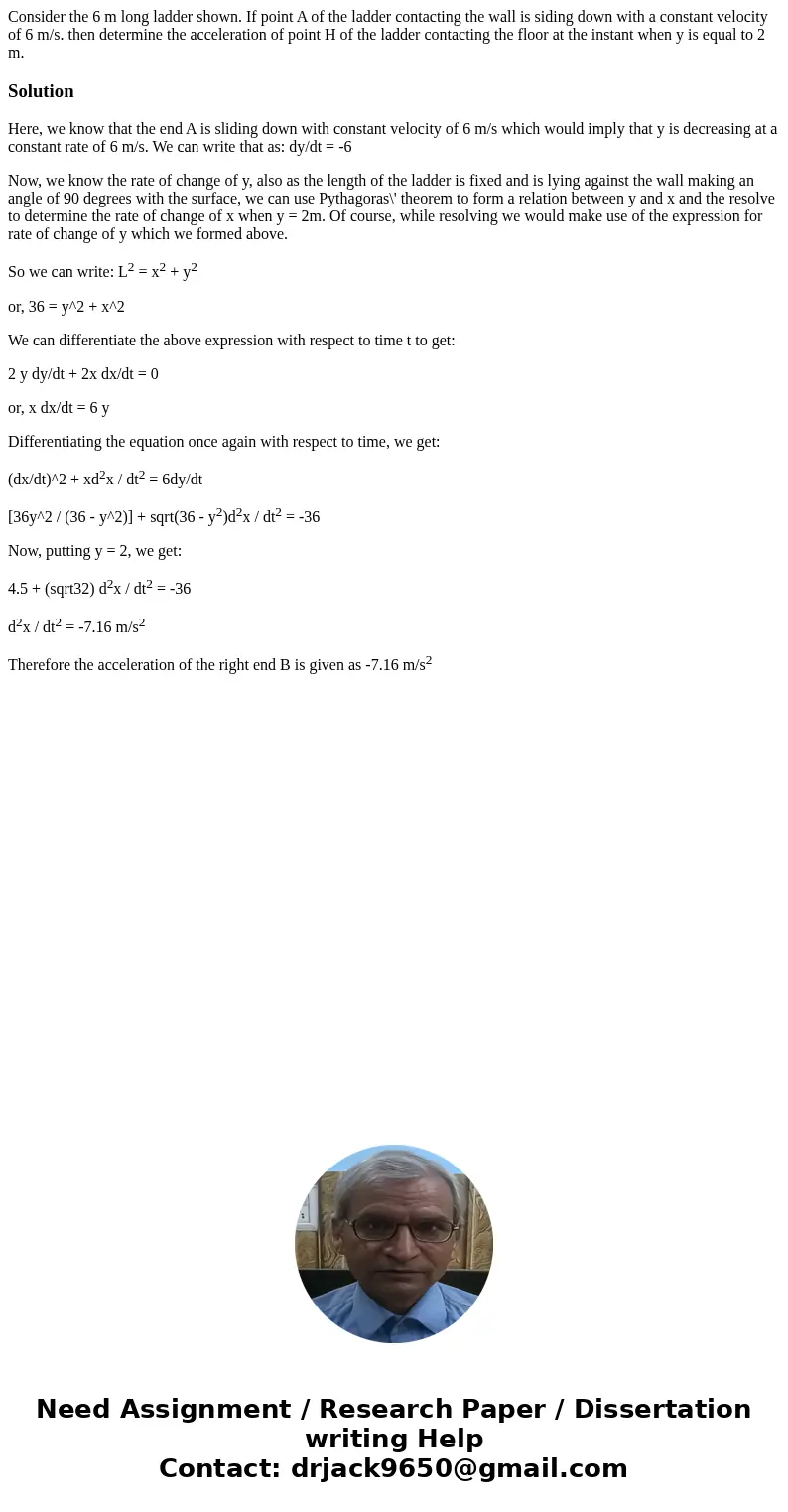Consider the 6 m long ladder shown If point A of the ladder
Solution
Here, we know that the end A is sliding down with constant velocity of 6 m/s which would imply that y is decreasing at a constant rate of 6 m/s. We can write that as: dy/dt = -6
Now, we know the rate of change of y, also as the length of the ladder is fixed and is lying against the wall making an angle of 90 degrees with the surface, we can use Pythagoras\' theorem to form a relation between y and x and the resolve to determine the rate of change of x when y = 2m. Of course, while resolving we would make use of the expression for rate of change of y which we formed above.
So we can write: L2 = x2 + y2
or, 36 = y^2 + x^2
We can differentiate the above expression with respect to time t to get:
2 y dy/dt + 2x dx/dt = 0
or, x dx/dt = 6 y
Differentiating the equation once again with respect to time, we get:
(dx/dt)^2 + xd2x / dt2 = 6dy/dt
[36y^2 / (36 - y^2)] + sqrt(36 - y2)d2x / dt2 = -36
Now, putting y = 2, we get:
4.5 + (sqrt32) d2x / dt2 = -36
d2x / dt2 = -7.16 m/s2
Therefore the acceleration of the right end B is given as -7.16 m/s2

 Homework Sourse
Homework Sourse